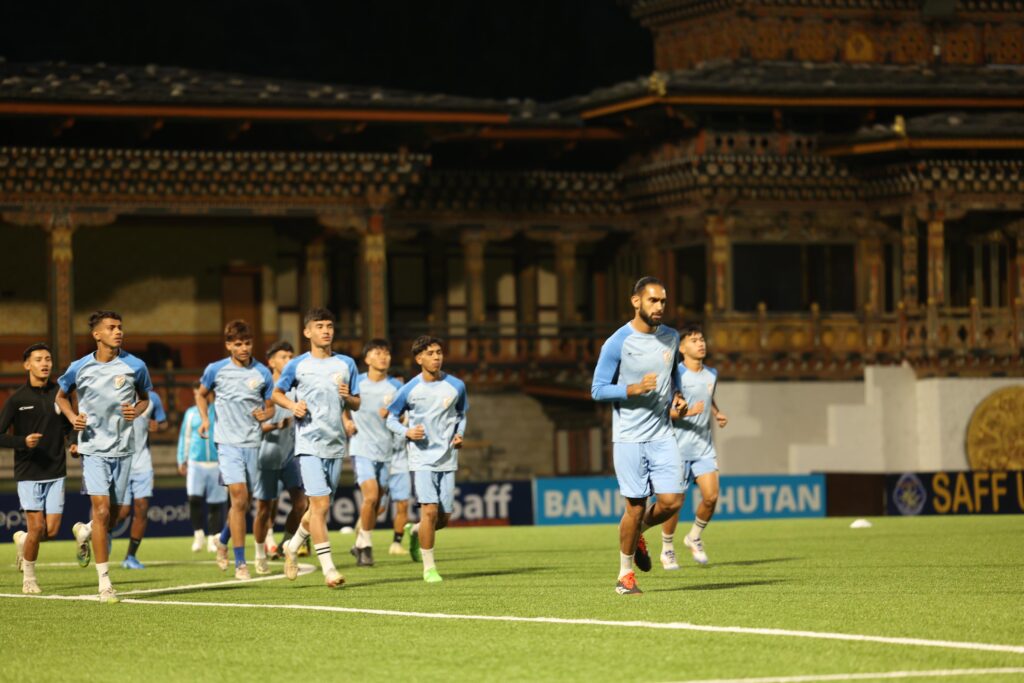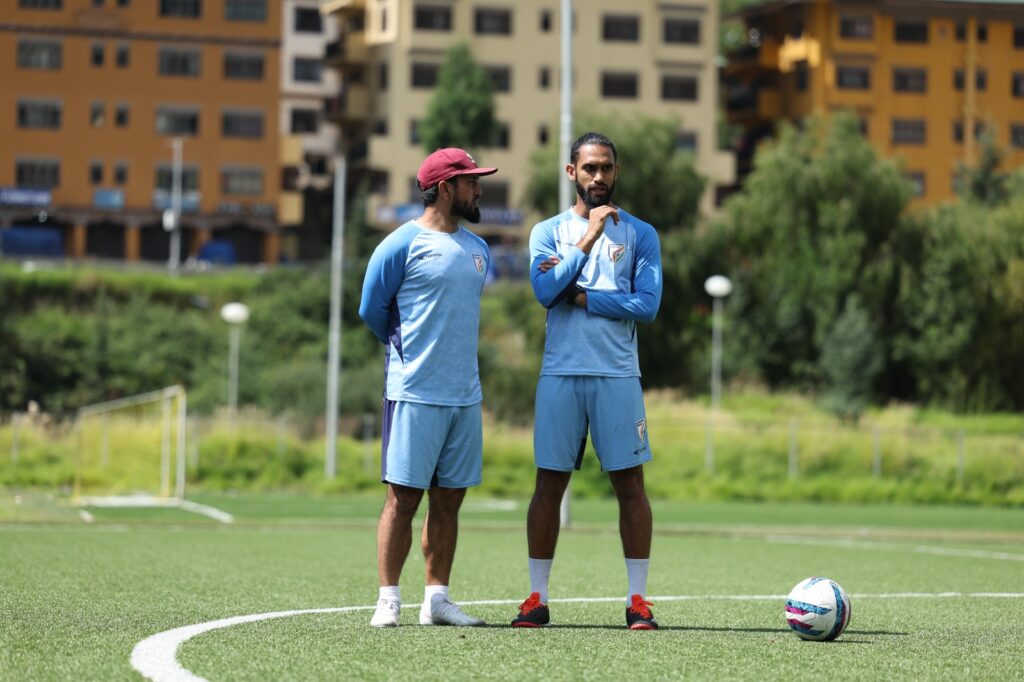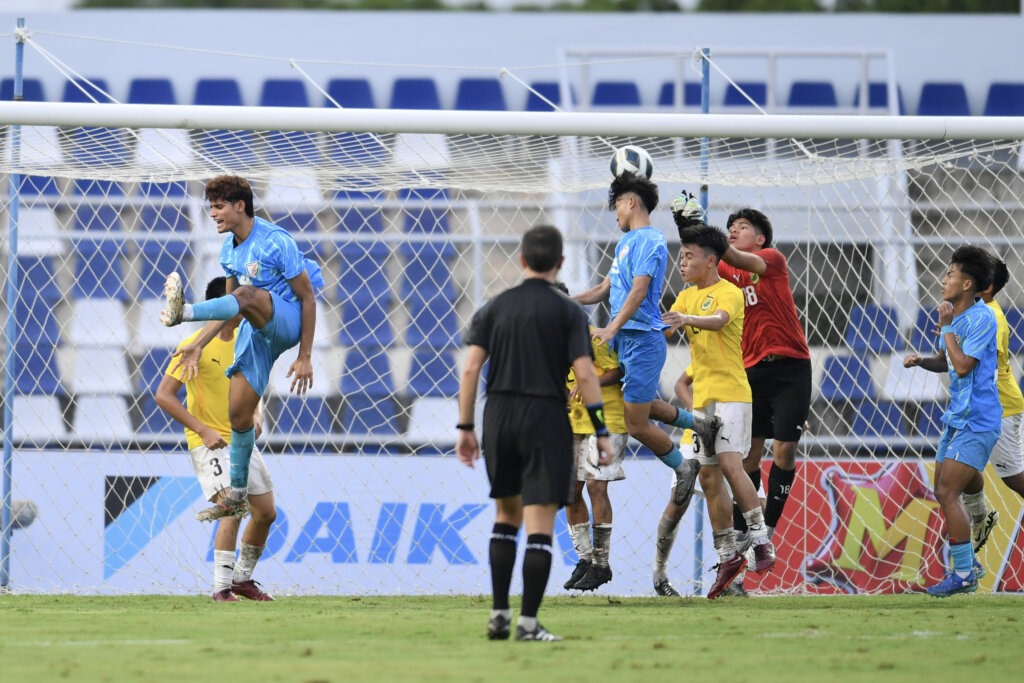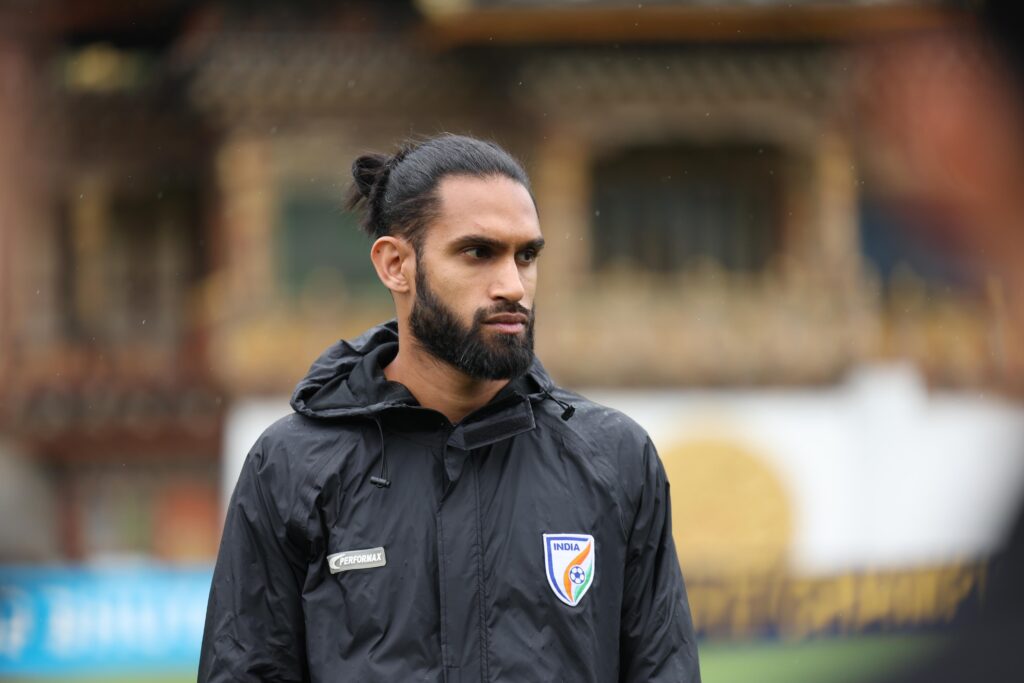
A RevSportz Exclusive
When the senior team drops to 125 in the FIFA rankings, the India’s U17 football team are on a roll in the AFC U17 Asian Cup 2025 Qualifiers in Chonburi, Thailand. After winning the U17 SAFF Championship a few weeks back, the team started their qualifying campaign in perhaps the best way possible, registering their biggest-ever win – thrashing Brunei Darussalam 13-0. The Blue Colts matched a 40-year-old record when the team defeated Macau by the same margin in the AFC U16 Championship in Bangkok.
While we celebrate this feat, knowing the background of such successes is also important. As we raise several questions on fitness in the Indian Super League (ISL) or when the senior team lacks the agility and strength to match a superior opponent after 70 minutes into the game, this U17 side looks sharp. To decode their fitness mantra, we have Chelston Pinto, the team’s strength and conditioning coach, in this exclusive freewheeling chat with RevSportz.
Here are the excerpts:
Q: At a time when we talk much about the fitness and physical difference of the senior Indian players, whether for the national side or the league, how do you see this bunch of young players in that respect?
Pinto: That’s a great question! This is the first time we’ve implemented GPS technology for the players, thanks to the AIFF, which we’ve been using since the SAFF Championship camp. We’ve tracked every training session and match, averaging 120 kilometres per match, aligning with European standards for distance covered.
During the SAFF finals, three of our players even surpassed 12 km in a single game. The key differentiator for us, beyond technical skills, was our fitness, particularly in the last 15 minutes of each match. Our goal was to ensure we consistently hit our physical targets, regardless of the opponents. Many teams tend to defend and counterattack in the final moments, but we focused on maintaining our intensity to make it physically uncomfortable for them, and I believe we achieved that.
Q: Going back to the SAFF, which was in Bhutan – a high-altitude ground; did that affect the players?
Pinto: Not at all! It was planned beautifully by our head coach, Ishfaq Ahmed. He planned the camp in Srinagar, and the boys trained there for two months ahead of the tournament.
So, when we moved to Bhutan, the acclimatisation was more of a natural process for us. If you see our numbers, from the training sessions and in the matches, we were pretty consistent. Fortunately, we didn’t have any muscle injuries whatsoever during the tournament. This shows the fitness of the players.

Q: You’ve been in the system for quite some time now. What are the changes that you are witnessing being made? What are your thoughts on the implementation of sports science?
Pinto: In senior football, there’s now a stronger focus on educating players about body care, nutrition, and recovery. Players understand the importance of the right meals and engaging in injury prevention and strengthening sessions to stay healthy throughout the season.
This awareness has grown through education from coaches and senior players, and it trickles down to juniors. We’re now also able to incorporate strength and conditioning for junior teams and the women’s senior teams. This approach is creating fitter, more structured players overall, which is a promising development.
Q: Do you think enough efforts are being made to look after the players’ mental fitness along with physical?
Pinto: I’m not fully aware of the current situation regarding mental-health initiatives, because it’s not my domain, but I know the AFF has provided sports psychologists for national teams during major tournaments.
From my perspective, many ISL players who I work with personally are working with individual sports psychologists. There’s a growing awareness among coaches and players that mental fitness is just as important as physical fitness, football skills, and nutrition. While it’s not where it should be yet, we’re moving in the right direction, and that’s a positive sign.
Q: Considering the young players you currently work with, how would you compare their physical development to that of the senior players on the current Indian team? Do you believe that in five or six years, these younger players will be fitter than the current senior team is?
Pinto: I believe so. These young players have access to facilities and expert guidance that the current senior players may not have had. As a result, they’re likely to be better equipped to care for their bodies, perform at a higher level, and, hopefully, achieve even better results in the future.

Q: Do you think these young players will eventually match the physical standards of European and other foreign players coming into the ISL, given the current focus on scientific research and enhanced physical fitness programs?
Pinto: Yes, I believe so. If you look at it now, our under-17 boys recently had the opportunity to compete in Indonesia, where they faced some of the strongest age-group teams, including Bali United, Bali United’s under-20 team, and the under-17 Indonesian national team, who regularly compete against the best in the world. This experience served as a reality check, showing us the level we need to reach and the physical standards we need to meet. We played a practice match with Bali united where we drew 2-2. Bali U17 team, first match was 3-1 loss and then second match we won 1-0.
After the initial stages, we managed to match that level, competing physically in all three games. Although the final result went their way in the last game, it was a very close one, and we held our own, showing significant growth. Right now, the physical metrics our players are achieving in each game are comparable to those of top under-17 teams in Europe, indicating that we’re moving in the right direction.
However, I want to focus even more on nutrition to ensure that these players are adequately fuelled and growing to their full potential. With this holistic approach, we can create a lasting ecosystem that supports their long-term development and the team’s success.
Q: After SAFF, leading up to the AFC Qualifiers – as a S&C Coach, what was your regime for the team?
Pinto: Fifteen to sixteen of our players had played several games leading up to it, so we needed to de-load them, providing adequate rest and complete recovery. Fortunately, at the under-17 level, the boys recover quickly, so we focused on their care over the next seven to ten days to ensure they returned to peak form.
Meanwhile, another group of fifteen to eighteen boys hadn’t had as much game time, so we organised matches to keep them match-fit and included gym sessions to maintain high strength levels. Our goal was to have all 23 players travelling to the AFC on the same page with their fitness levels within a week to ten days.
Q: What is the usual routine after a game for the boys?
Pinto: Typically, after a 90-minute match, players who didn’t play or had limited time go through top-up running sessions with intense conditioning, focusing on sprint distance and quick movements with the ball. The following day is usually recovery, but for those who haven’t played, it includes a football-conditioning session.
Two days after the match, known as “plus two”, is generally a rest day, depending on the schedule. This setup helps us balance each player’s load. For regular starters, we prioritise recovery, while for those who don’t play as often, we focus on conditioning to ensure they’re match-ready whenever needed.

Q: When they are not playing any tournaments, are they all staying together in a camp?
Pinto: Yes, that’s correct. The players stay together on a campus. They share meals, generally eat at the same times, and follow a synchronized daily routine, waking up and going to bed together. This creates a structured environment where they have gym sessions, and on days without gym training, we go for walks and conduct activation sessions.
Everything is done as a group, including training sessions, ensuring that everyone is present at the same place and time throughout the camp.
Q: Given your close work with the players and the emphasis on nutrition, how does the system address the nutritional needs of players, particularly those from humble backgrounds who may primarily rely on staple foods like rice? What support does the federation provide to ensure all players receive proper nutrition?
Pinto: As I mentioned, many players come from humble backgrounds and primarily rely on simple staple foods like rice, which may not be the most nutritious for athletes. However, they’ve learned to adapt. When they join the national setup, we aim to provide them with more nutritious options, especially now that we have evolved in sports science and understand the energy output required from each player.
We focus on ensuring they receive adequate protein, carbohydrates, and fats to fuel their performance effectively. Our goal is to help them peak at the right time and maintain enough energy reserves during games to perform at their best. This approach works hand-in-hand with their training. As they progress, we hope they will transition to the senior level and, upon signing professional contracts, gain the knowledge to manage their nutrition and training independently.
A handful of these players are part of ISL reserve sides and most of them are in the academy teams. Both SAFF and now the AFC Qualifiers will be important for them from a scouting perspective and I’m sure these young lads have a bright future ahead, and the transition to the national team will be soon.




